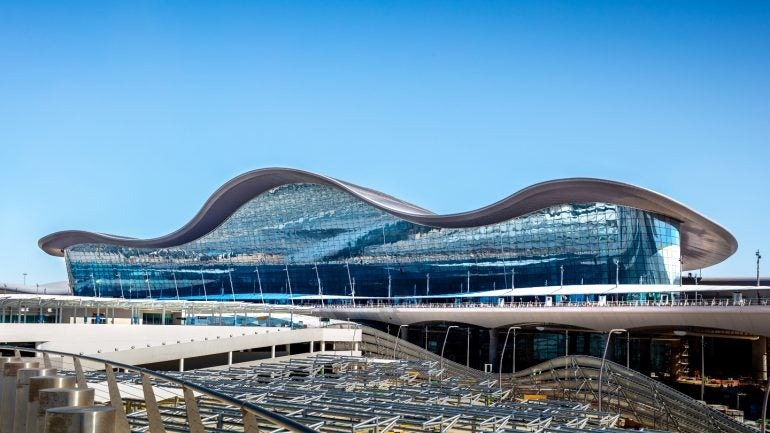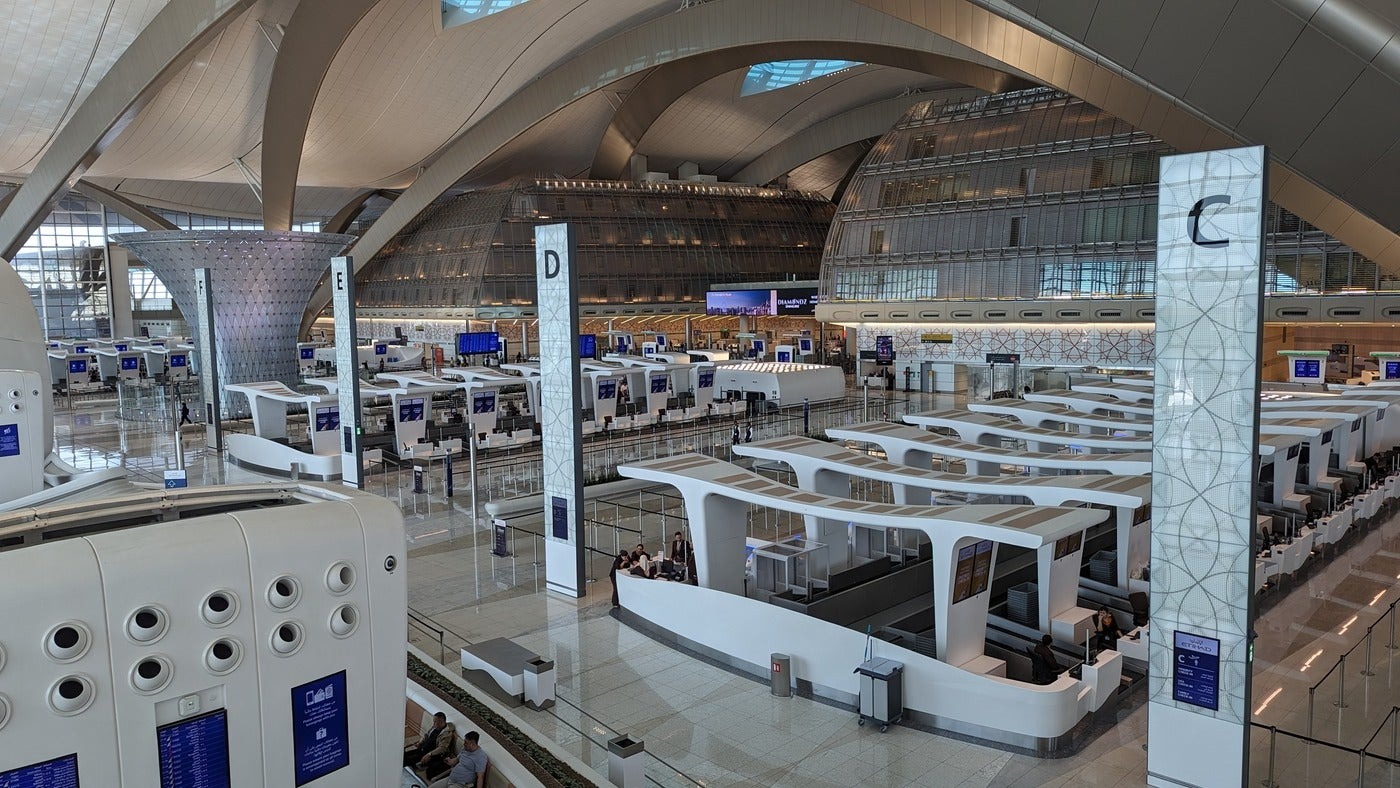Interview
“This airport offers a memorable experience” – Abu Dhabi Airports CEO on Zayed International
Elena Sorlini, CEO of Abu Dhabi Airports, talks to Noah Bovenizer about the future of Zayed International Airport after the opening of its new Terminal A.

Abu Dhabi Airports CEO Elena Sorlini. Credit: Abu Dhabi Airports
The Middle East is one of the fastest-growing regions in the aviation market, thanks to its strategic position for international connections and the significant push by local governments to highlight the area as a prime tourist destination.
This has led to billions of dollars being invested into aviation infrastructure in the region, with much of the investment coming from the United Arab Emirates, which has already managed to make Dubai International Airport the second busiest in the world.
However, despite the focus often being on its neighbouring emirate, the UAE’s capital Abu Dhabi has also invested heavily into its airport, recently opening the 742,000 square metre Terminal A at the newly named Zayed International Airport (AUH), increasing the hub’s maximum capacity from 23 million to 45 million passengers.
Airport Technology was recently invited to visit the new terminal and spoke to the CEO of AUH’s operating company Abu Dhabi Airports, Elena Sorlini, about the future of the airport and how the new Terminal A will bring opportunities.
Noah Bovenizer: Could you give an overview of how you ended up here as CEO of Abu Dhabi Airports and what your goals are with the company?
Elena Sorlini: I’ve been working in the aviation industry for almost 20 years, I started with Macquarie Bank, which had a fund investing in airports, working at Rome Fiumicino Airport before I moved to London to coordinate its portfolio strategy. Then I moved to Copenhagen where I worked with Macquarie as shareholders before moving to work within the airport. I left Denmark in 2018 to go to Oman where I worked to coordinate the aviation strategy across all the aviation assets and services, after which I was offered a similar role in Abu Dhabi with the ADQ sovereign fund’s aviation cluster.

The opening of the new Terminal A marked the beginning of a rebrand for Abu Dhabi’s Zayed International Airport. Credit: Victor Romero / AD Photos
My interest here was both theoretical and philosophical because, having worked in airports in Europe, I could see how all the different operators in one site are not necessarily aligned, which is detrimental to the growth of the sector within a country. Working here has basically proven to me that once you set a direction for the sector, and get all the aviation operators aligned along with external stakeholders like tourism entities and logistics entities, then you can maximise growth much more efficiently and faster – as Abu Dhabi is proving.
Noah Bovenizer: Zayed International’s new Terminal A has been open for a few months now, what are the immediate benefits you have been seeing?
Elena Sorlini: It is really unlocking capacity for the growth of Abu Dhabi, as we had some capacity constraints in the previous terminal where we had a maximum capacity of about 23-24 million passengers and reached 22.5m last year last year. With the new terminal, we’ve worked on the combination of two things.
One is making more capacity available, and we are now targeting about 27-28 million passengers this year, which is a huge jump before for an airport of this size. But the other is also the amazing product that we can offer to both airlines and passengers.
I think the passenger experience here is now one of the best in the region. We have an ACI ASQ rating of 4.64/5, which is pretty impressive. But, most importantly, we see that our passengers are very happy. We have a philosophy and a mission to put the passenger back at the centre of our attention.
I think the passenger experience here is now one of the best in the region.
In Europe, you have this feeling that you just get ticked through boxes. Not everywhere, but most of the time – and you get processed as a transaction, rather than as a passenger.
Here, I think what we want, and what we’re trying to do, is to put the passenger back at our attention, they are our customers at the end of the day, right?
They’re not a problem, they are what we are trying to attract. And we want them to be happy, to spend money, of course, at the airport, and to have a very positive experience. This airport offers a memorable experience to passengers.
Also, as an Italian, I’m in love with this building. It’s like a piece of art, but a piece of art that is very functional in delivering a good service.
Noah Bovenizer: The construction of Terminal A is part of the UAE’s wider ambitions for tourism, which also includes an entirely new airport in Dubai. Are you concerned about fighting for passengers with the nearby city?
Elena Sorlini: Well, let’s say that we have been growing, and Dubai has been growing quite a lot in the last year as well. They have got [passenger numbers] back to where they were before Covid-19, but we haven’t been impacted by the growth – we have actually been growing at 36% in Q1.
Yes, there are these plans, but we have to look at the here and now. We are here and we have extra capacity to deploy, but for sure as they develop the new terminal [in Dubai] they are going to complement our capacity.
So, I think for the time being we are growing and we’re happy, and, when they come into place, there will be further growth for the entire sector as it keeps on developing. I think it’s not necessarily bad that we have more capacity and more infrastructure within the region, we’re also talking about Saudi opening up to tourism and Oman has big plans there. The important thing is that all of the GCC region becomes a tourist destination and that it becomes more and more relevant for other countries.
Noah Bovenizer: At the moment there are few public transport connections to the airport and no rail links, is this something you are keen on bringing to the site?
Elena Sorlini: Yes we are working on that. Etihad Rail is one of the companies in the ADQ portfolio – in fact, when I was working at ADQ it was one of the companies in my transportation and logistics cluster – so there is a plan to enhance multimodal links. Connectivity is absolutely key and it is only going to become more and more important when we open the [flight] connections to Oman and Saudi Arabia. So we are working on a plan to get the airport connected to the rail system.

The new Terminal A building allows the airport to target a capacity of up to 28 million passengers per year. Credit: Noah Bovenizer
Noah Bovenizer: Urban Air Mobility tech has become a big focus for many airports, is this something you are working on here in Abu Dhabi?
Elena Sorlini: Urban Air Mobility (UAM) is very important on the government agenda, so we are looking at it on the sector level. The beauty from our side, from an infrastructure side, is that what is required to enable this kind of movement and traffic is already there if you want it.
To give an example, we have an amazing airport as part of the system we are managing called Al Bateen, a general aviation airport mainly dealing with private jet and rotary movements. There we already have everything deployed as we have the infrastructure where [eVTOLs] can take off and land and we have access to the city centre, making it very convenient.
We just need to look at integrating that offer with what is required by these machines. So, we need the charging units, but the industry is developing that, and we are trying to understand what we need to procure in order to be prepared for when they are ready to launch. Then we need to have some form of line maintenance facilities, and that’s it, we are ready to go, we don’t have to dramatically change the infrastructure that we have. And I don’t think we are talking about many years here, we are talking about months.
We are in talks with the operators that are most likely to start here soon and we are definitely getting ready. There are synergies available here as well, as you can feed UAM into the flights and the aircraft here, there are good synergy [opportunities] that we are assessing.
I think it will take a bit of time before the volumes become relevant, but it is going to be the future, so we’re definitely interested in being a part of it.